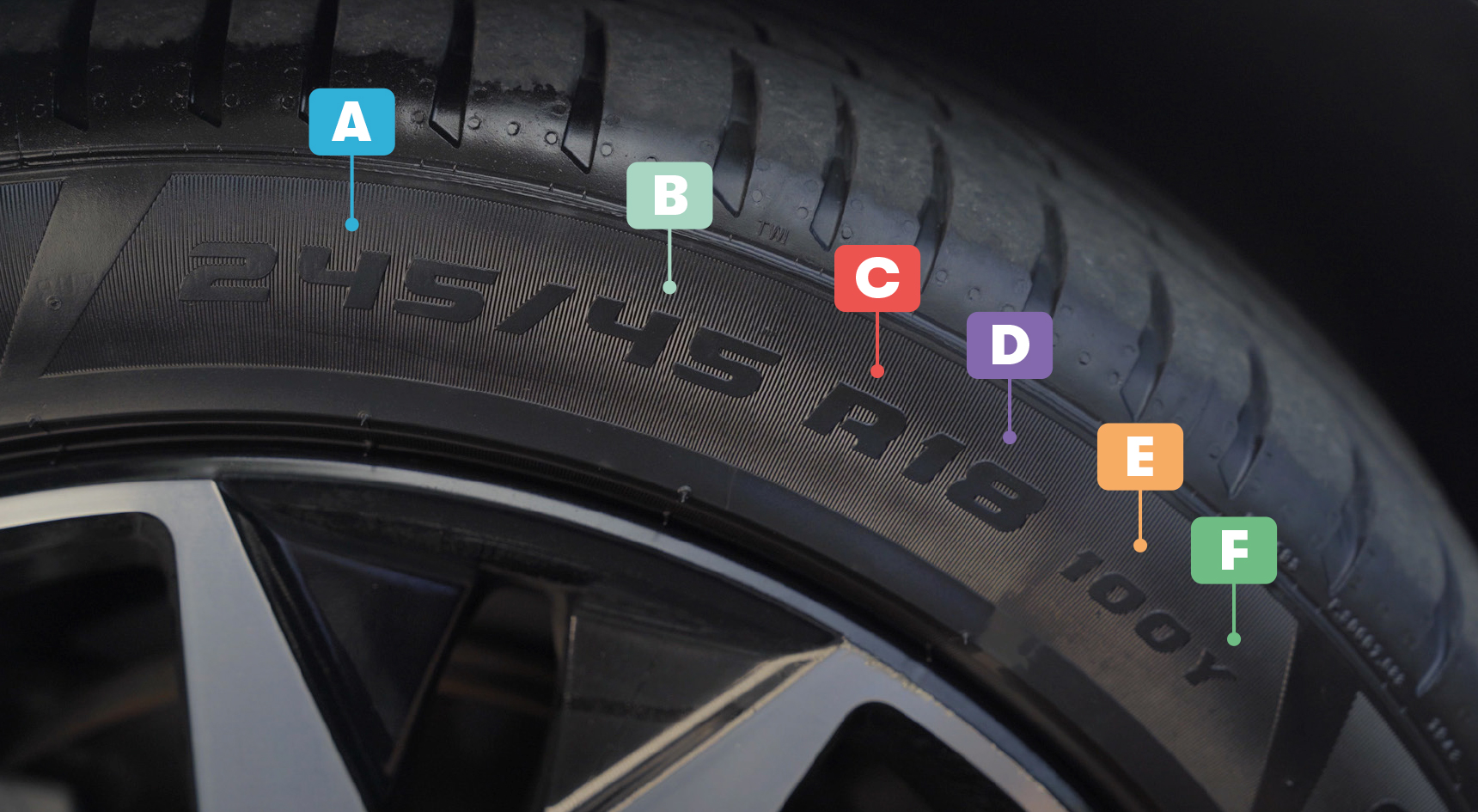How to decode your tyres’ numbers

It’s not often you crouch down to admire your tyres (unless you’re sporting some cool mags).
That said, you may not have noticed the tiny numbers printed on your wheels that mean more than you think.
Watch the video below where we explain what your tyre numbers mean and then read on.
Now let’s decipher the numbers in the example below.

A. Tyre’s width
The first three numbers represent the tyre’s width in millimetres (245mm), measured from sidewall to sidewall.
B. Tyre’s height
The following two numbers (45) show the height of the tyre’s sidewall as a percentage of the tyre’s width. Here, the height of the tyre’s sidewall is 45% of the tyre’s width.
C. Tyre’s construction
This letter tells us how a tyre is constructed. In this example, the ‘R’ means that the car has radial tyres, which are made with ply cords (a string cord made of several twisted strands) that radiate from the centre of the tyre.
D. Tyre’s rim diameter
The next number is the rim diameter, which is shown in inches rather than millimetres. This tyre is 18 inches wide.
E. Tyre’s load capacity
This number is checked against a chart to identify the maximum load the tyre can carry at the speed indicated to ensure you don’t overload your tyres, causing a possible blowout. This tyre has a load index of 100, meaning it has a load capacity of 800kg.
F. Tyre’s speed rating
The speed ratings or speed index is represented by a single letter and shows the maximum speed the tyre can go while carrying its maximum load. The tyre speed rating code in this example is ‘Y’ representing 300km/h.
Why you should know your tyres’ specs
Now that you know what the numbers mean, you’re probably wondering why it’s handy for you to know them in the first place.
First, if you’re happy with the performance of your tyres, you can choose similar tyres to be fitted when the time comes to replace them.
Another reason it’s important to know your tyres’ numbers is for safety. Fitting incompatible tyres on your vehicle can compromise your ride’s performance and your protection on the road.
Can the numbers tell me the age of my tyre?
Each service the overall condition of your tyre should be checked for any age-related issues. If you want to know the age of your tyre, you can check the manufacturing date if they were made from the year 2000 and onwards. Look at the last four digits of the serial number on the tyre’s sidewall.
The 10 to 12-character serial number usually starts with the letters DOT, and the last four digits will show the week and year it was manufactured. For example, 1712 indicates the tyre was made in the 17th week of 2012.
It’s an industry recommendation, but not law, that tyres more than six years old should be inspected and potentially replaced. After all, their best years of performance and durability have probably been reached.

